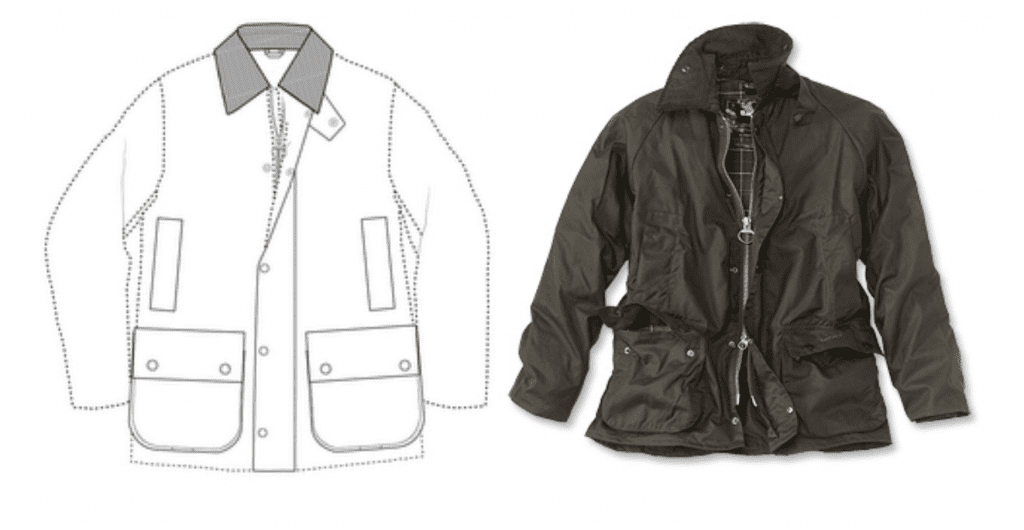“Everyone is waxing lyrical about Barbour.” That is what the Financial Times said about the 125 year old British outerwear maker last year, reflecting on the enduring demand for its wares. With fans that range from decades of British royalty (Queen Elizabeth, the late Princess Diana, Prince Charles, Kate Middleton, etc.) to James Bond (actor Daniel Craig wears a Barbour wax jacket in Skyfall), supermodels like Claudia Schiffer, and influencers like Alexa Chung and still yet, “kids in Tokyo, Los Angeles and New York City,” Barbour’s $400-or-so wax jackets have proven a pinnacle of longevity in a highly trend-driven industry.
In furtherance of its business, which sees it turn out “some 3,000 waxy jackets every week” in its Simonside, England-located headquarters, according to the FT, nearly all of which “are rendered almost entirely by hand,” Barbour has not only built a timeless brand with a global footprint (it maintains about 2,000 stockists around the world in addition to its own outposts) and nearly $300 million in annual revenue, the privately-held company has created a truly iconic, staple product.
Barbour’s wax jacket is so significant that when consumers see it, they immediately link the appearance of the garment with a single source. With that in mind, Barbour looked to the U.S. Patent and Trademark Office (“USPTO”) in December 2018 to register the ornamental design of its jacket as a trademark – or better yet, trade dress.
Specifically, Barbour claimed exclusive rights in – and was seeking protection for – “a three-dimensional configuration of an outerwear design featuring a combination of the following elements: 4 pockets placed and oriented as follows: 2 on each of the front left and right side beginning at the mid-breast of the jacket and extending to the waist of the jacket; [and] 2 large pockets on each of the left and ride side of the jacket beginning at the [waist] and extending to just above the bottom of the jacket both with exterior flap closures and two eyelets on the underside of the front pockets.”

Still yet, Barbour is claiming rights in “a metal zipper pull configured in a ring shape with the top quarter of the ring being solid on a 2-way opening zip; a collar made of corduroy with detachable throat cover; and a studded flap that closes over the entirety of the front zipper on the middle of the jacket.”
In order for Barbour to claim protection in the jacket design, it will have to show that the elements at issue – i.e., the pocket placement, the zipper, collar, and studded flap – are both non-functional and have acquired distinctiveness (since product design elements can never been inherently distinctive, as we learned in Wal-Mart Stores, Inc. v. Samara Bros). In terms of the latter, Barbour will have to show that consumers see the design elements and associate them with a single source.
Following some (inevitable) preliminary pushback from the USPTO in March 2019 on the basis that the jacket configuration is not inherently distinctive, counsel for Barbour responded with a nearly 250 page filing, which included evidence of “over 30 years of substantially continuous and exclusive use of” – and advertising of – the jacket configuration in the U.S., as well as “extensive third-party press coverage of the design.”
Barbour asserted that since it first began selling the jacket at issue almost 4o years ago, it has sold “over 1 million jackets include the trade dress worldwide,” and in the U.S., alone, since 2009, which is “nearly 20 years after products bearing the trade dress were first sold in the U.S., Barbour says that it has “enjoyed sales in excess of $23 million” just for its wax jackets, and has generated even more than that, in international sales.
Seemingly persuaded by the evidence and the sales figures that Barbour provided that the company’s wax jacket had acquired the necessarily level of distinctives to function as a trademark, the USPTO registered the jacket configuration on its Principal Register in December 2019. The registration followed from predictions from at least some legal experts that it would be a long, hard fight for the brand to land a registration, particularly given that other brands had experienced“difficulty showing that configurations for several zippers,” for instance, were functional, and thus, not eligible for protection.
As for whether Barbour’s win will send brands running to the USPTO for registrations for garment designs, it is unlikely. While the brand may be walking away with a registration, if anything, this instance sheds light on just how high of a bar it really is to show acquired distinctiveness for a product design. After all, a product history of 40 years and sales of more than $23 million in a period of less than 10 years specifically for the trade dress that a brand is seeking to protect are no small figures.











